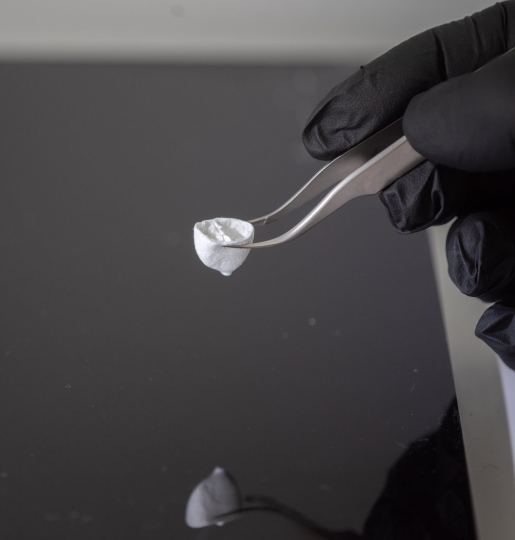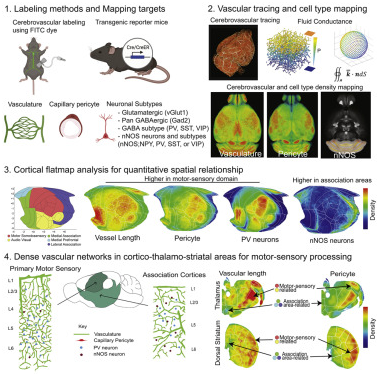12週間の治療後、80%以上の被験者が耳鳴りの症状の軽減を経験した At least 80 percent of participants experienced a reduction in their tinnitus symptoms after 12 weeks of treatment
2022-07-07 ミネソタ大学ツインシティーズ校
レニーレ治療によるTENT-A2臨床試験結果のハイライトは以下の通りです。
・12週間の治療後、80%以上の被験者が、Tinnitus Handicap Inventoryによる測定で耳鳴りの症状の軽減を経験。
・また、治療を受けた参加者は、臨床的に定義された基準のほぼ3倍の耳鳴り症状の平均的な改善を達成しました。
・また、88%の方がレニーレ治療を他の耳鳴りのある方に勧めたいと回答しています。
大規模臨床試験が成功裏に終了したことは、耳鳴りを抱える多くの人々を支援する治療法を開発し、バイモーダル神経調節が耳鳴りを抱える人々にとって安全で効果的な介入であることをさらに実証するための大きなマイルストーンとなります
バイモーダルニューロモジュレーションとは、治療目的で2つの対になる刺激で神経を刺激することである。この研究で使用された耳鳴り治療器は、欧州で市販されているLenireとして知られており、Neuromod社によって開発されました。ワイヤレス(Bluetooth)ヘッドフォンで両耳に音波を送り、舌の表面に32個の電極(商標:Tonguetip)を通して電気刺激を与えるものである。この装置の設定は、音声と電気刺激の異なる組み合わせで治療を行うように設定することができます。
<関連情報>
- https://cse.umn.edu/college/news/umn-professor-part-team-has-published-results-second-large-scale-study-tinnitus
- https://www.nature.com/articles/s41598-022-13875-x
大規模ランダム化試験において、異なるバイモーダル神経調節の設定が耳鳴り症状を軽減させる Different bimodal neuromodulation settings reduce tinnitus symptoms in a large randomized trial
Brendan Conlon,Caroline Hamilton,Emma Meade,Sook Ling Leong,Ciara O Connor,Berthold Langguth,Sven Vanneste,Deborah A. Hall,Stephen Hughes & Hubert H. Lim
Scientific Reports Published:30 June 2022
DOI:https://doi.org/10.1038/s41598-022-13875-x

Abstract
More than 10% of the population suffers from tinnitus, which is a phantom auditory condition that is coded within the brain. A new neuromodulation approach to treat tinnitus has emerged that combines sound with electrical stimulation of somatosensory pathways, supported by multiple animal studies demonstrating that bimodal stimulation can elicit extensive neural plasticity within the auditory brain. More recently, in a large-scale clinical trial, bimodal neuromodulation combining sound and tongue stimulation drove significant reductions in tinnitus symptom severity during the first 6 weeks of treatment, followed by diminishing improvements during the second 6 weeks of treatment. The primary objective of the large-scale randomized and double-blinded study presented in this paper was to determine if background wideband noise as used in the previous clinical trial was necessary for bimodal treatment efficacy. An additional objective was to determine if adjusting the parameter settings after 6 weeks of treatment could overcome treatment habituation effects observed in the previous study. The primary endpoint at 6-weeks involved within-arm and between-arm comparisons for two treatment arms with different bimodal neuromodulation settings based on two widely used and validated outcome instruments, Tinnitus Handicap Inventory and Tinnitus Functional Index. Both treatment arms exhibited a statistically significant reduction in tinnitus symptoms during the first 6-weeks, which was further reduced significantly during the second 6-weeks by changing the parameter settings (Cohen’s d effect size for full treatment period per arm and outcome measure ranged from – 0.7 to – 1.4). There were no significant differences between arms, in which tongue stimulation combined with only pure tones and without background wideband noise was sufficient to reduce tinnitus symptoms. These therapeutic effects were sustained up to 12 months after the treatment ended. The study included two additional exploratory arms, including one arm that presented only sound stimuli during the first 6 weeks of treatment and bimodal stimulation in the second 6 weeks of treatment. This arm revealed the criticality of combining tongue stimulation with sound for treatment efficacy. Overall, there were no treatment-related serious adverse events and a high compliance rate (83.8%) with 70.3% of participants indicating benefit. The discovery that adjusting stimulation parameters overcomes previously observed treatment habituation can be used to drive greater therapeutic effects and opens up new opportunities for optimizing stimuli and enhancing clinical outcomes for tinnitus patients with bimodal neuromodulation.


